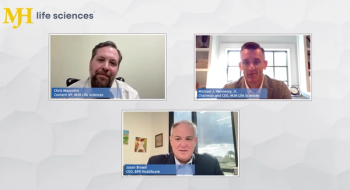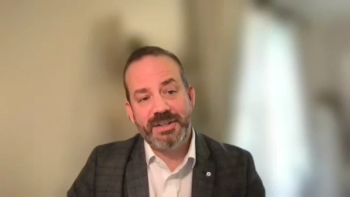
The Clinical Divide: Wearables, Patient Engagement & Injectable Cholesterol Drugs
The gist of the critics' argument is this: More data in the hands of patients could potentially be bad. To that I say, 'No way!' An engaged patient is a more compliant patient.
Technology changes everything, right? With that in mind, will the new Apple Watch Series 4 create more problems than it solves? Should we all be able to access the latest and greatest medical innovations? Not necessarily as things stand now. Are patients doomed to miss out on potentially life saving cholesterol drugs? Not if physicians and healthcare C-suite executives collaborate in order to tackle all of these challenges.
Welcome to the Clinical Divide. I'm Dr. Kevin Campbell. I'm a Duke-trained cardiologist and the CEO of the healthcare data startup
Patient Engagement and the Apple Watch
Our first story brings us back to the Apple Watch Series 4. Since its unveiling, this wearable has sparked lots of conversation, and it's not all applause. Recently critics have come out arguing that the smartwatch's built in ECG reader could result in people with healthy hearts panicking over false positives. And that panic could overwhelm an already busy healthcare system.
The gist of the critics' argument is this: More data in the hands of patients could potentially be bad. To that I say no way. An engaged patient is a more compliant patient. Plus, the new Apple Watch's ECG reader isn't the first of its kind. AliveCor has had one on the market for quite some time, and it has shown that patient directed ECGs can be very effective.
Putting technology in the hands of patients is critical to promoting long term engagement.
If C-suite executives and doctors work together to use simple technologies and put them in the hands of patients, outcomes will improve. Patient generated data will provide providers with more insight into the daily ups and downs of a patient's disease, process, and allow for quicker, more timely treatments.
Most importantly, by putting the power of technology and data in the hands of patients, we are much better able to focus on prevention rather than treatment, which could save both healthcare dollars and most importantly, patient lives.
Let's take things a step further. Thanks to the digital transformation, the clinic is no longer the only healthcare touchpoint. Patients can connect with physicians virtually, preventing additional clinical burden and improving doctor productivity.
Wearables like the new Apple Watch and the AliveCor KardiaBand will empower physicians, patients and hospital systems to focus on things that enhance outcomes.
Injectable Cholesterol Drugs
Now let's turn to a report on the new injectable cholesterol drugs. While these drugs are incredibly effective based on a plethora of clinical trial data, the prices of these drugs have become prohibitive to the point where only a select few can afford them. Many insurers simply will not cover them.
What does this mean? Some patients could be dying from heart disease for no good reason other than the cost of a drug.
This story really drives home just how much big pharma has taken us hostage. Why do they get to determine the cost in a vacuum without any input from physicians? And why do pharmacy benefit managers have so much say over who gets which drug and at what cost? How can the rest of healthcare solve this problem?
Physicians and healthcare executives must address these challenges together. For one: pharmacy benefit managers must be removed from the process as they simply serve as middle men and drive up costs unnecessarily by collecting your dollars on both sides of the deal. Think Tony Soprano and his gang from the HBO TVs series.
Pharma executives must be held accountable for the high cost of drugs and we cannot allow them to continually take advantage of patients in order to line their own pockets.
Physicians and healthcare decision makers need to work together to curtail costs and improve access to care, and new effective therapies such as injectable cholesterol drugs may be available to others. The size of a patient's wallet should not determine when and how they can obtain treatment.
This requires interaction with government officials, pharma executives, insurers and others. While there's no easy path forward, cooperation between healthcare executives and physicians will be critical to success.
If there's one thing I know, it's this: We will not find a solution until we address the problem together. In the end, we all go to work every single day for our patients. Not it's time to begin having hard conversations and taking real action on their behalf.
Thank you again for joining me for this episode of the Clinical Divide. Until next week, I'm Dr. Kevin Campbell for Healthcare Analytics News.
Navigate the digital transformation with confidence. Register for our newsletter .
More Episodes of The Clinical Divide:







































